All illustrations by Felicity Rose Cole
Whirligig beetle Gyrinus substriatus (above)
Predator and scavenger. One of several small black beetle species that whizz about on the surface.
Pond skater Gerris lacustris
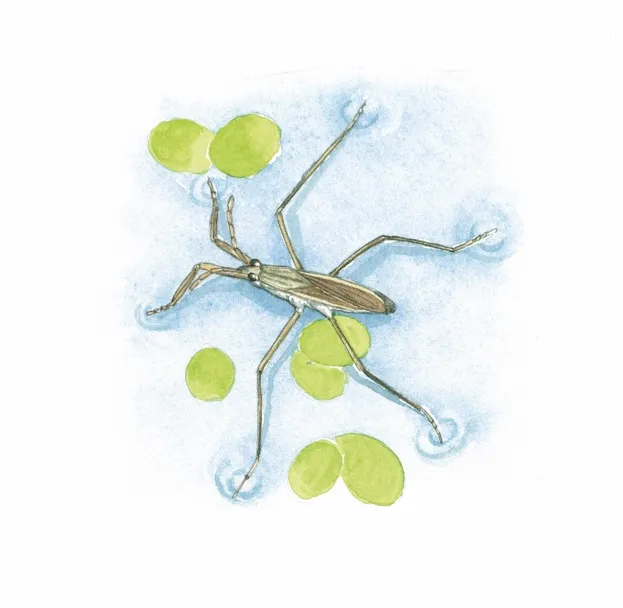
Predator and scavenger. Glides across surface on long legs. Flies well; rapidly colonises new ponds.
Great water boatman Notonecta glauca
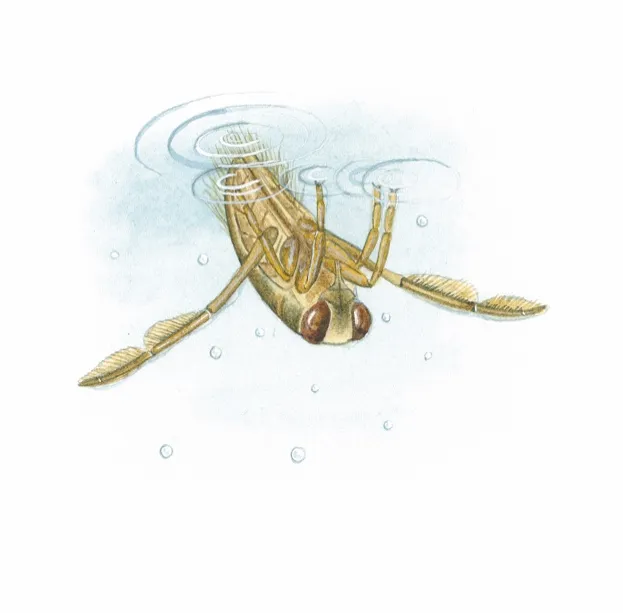
Predator and scavenger; also known as the backswimmer. Rows under surface with oar-like legs.
Water scorpion Nepa cinerea
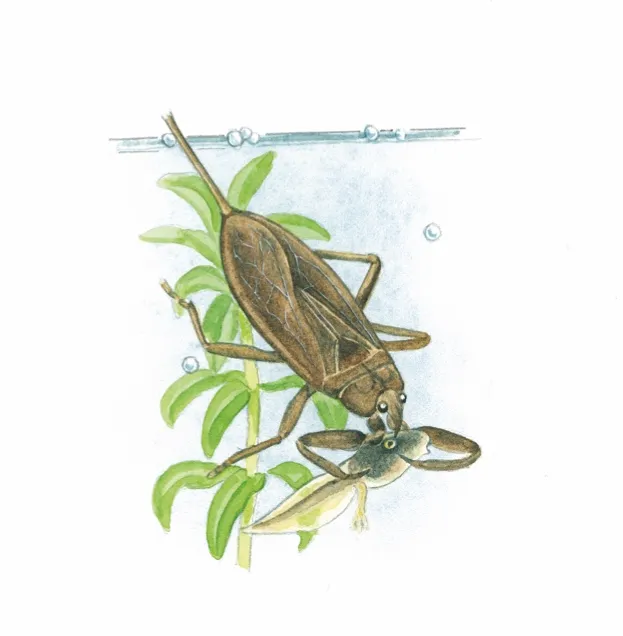
A predatory bug with huge pincers and a long ‘sting’ (a breathing siphon). Lurks in weedy margins.
Great pond snail Lymnaea stagnalis

Grazes algae and rotting matter. The largest pond snail; shell up to 50mm long, tapering sharply.
Midge larvae Chironomus species
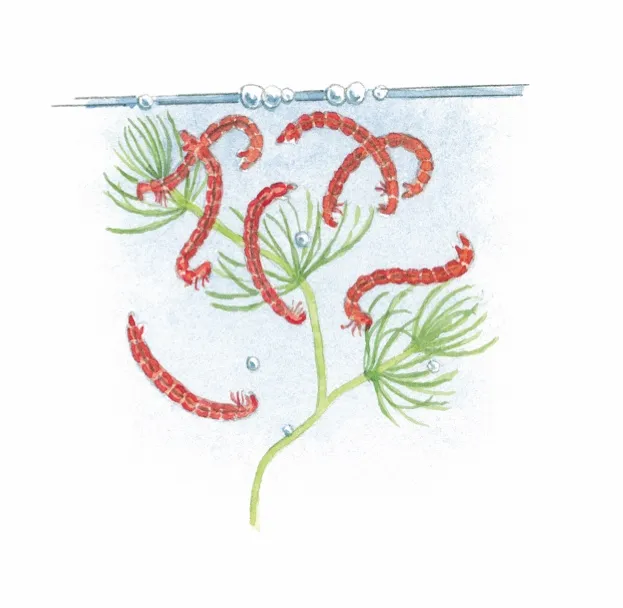
Feed on algae and decaying matter. Also known as bloodworms due to their bright red coloration.
Damselfly Nymph Various species
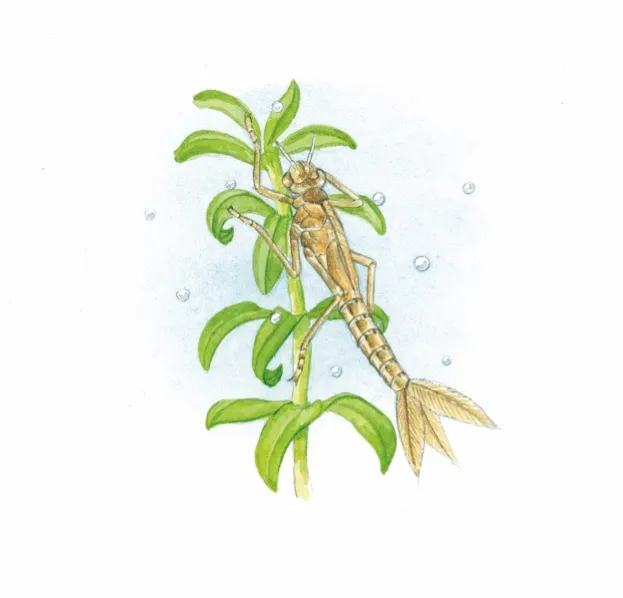
Predator. Slender body, about 20mm long; three long, flattened ‘tails’ at the end of abdomen.
Leech Glossiphonia complanata
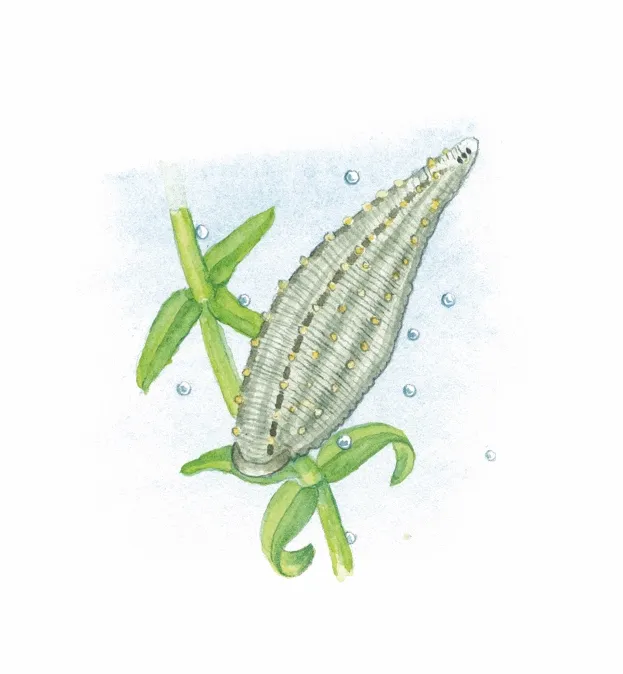
Feeds on water snails. Body 30mm long when extended; pale grey or fawn with yellow spots.
Great ramshorn snail Planorbis corneus
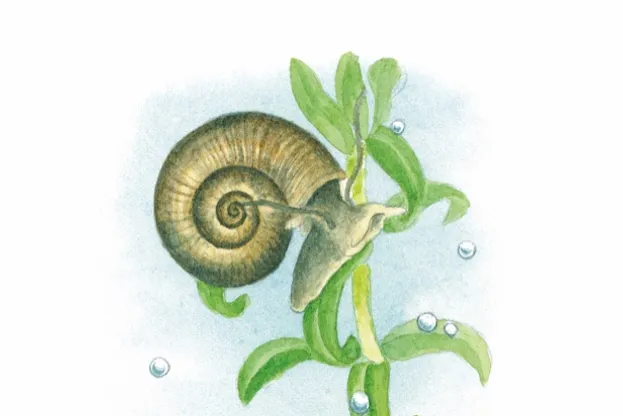
Grazes algae and rotting matter. The largest of several similar species; shell 30–35mm across.
Dragonfly nymph (various species)

Predator; especially fond of tadpoles. Very fat, stocky body, about 40mm long; lacks ‘tails’.
Water hog-louse Asellus aquaticus
Feeds on decaying matter; also known as the water slater. Looks like a leggy woodlouse.
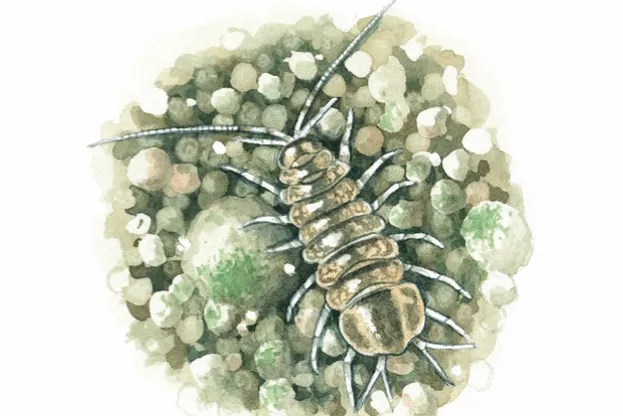
Common black diving beetle Agabus bipustulatus
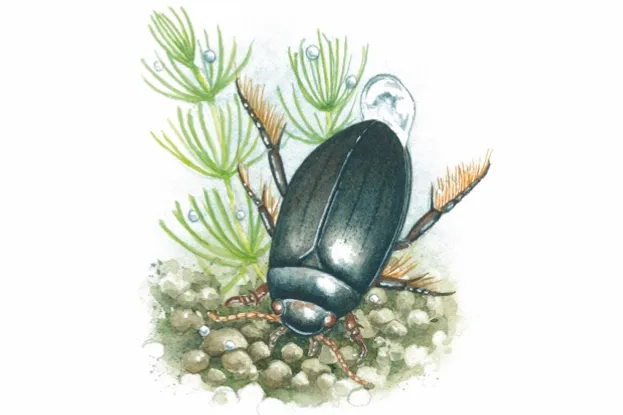
Predator. Shiny black body, 10mm long; red antennae and front legs.
